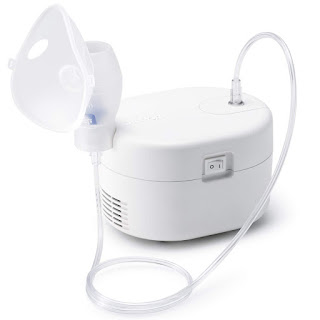what is nebulizer? what is its use ?
A nebulizer is a piece of medical equipment that a person with asthma or another respiratory condition can use to administer medication directly and quickly to the lungs to get instant relief from breathing distress.
A nebulizer turns liquid medicine into a very fine mist that a person can inhale through a face mask or mouthpiece. Taking medicine this way allows it to go straight into the lungs and the respiratory system where it is needed directly .
Difference between nebulizer and inhalers
Nebulizers and inhalers have some similarities — for example, they both deliver medicine directly into the lungs to help make breathing easier. However, there are some important differences.
There are two types of inhalers: a metered-dose inhaler (MDI) and a dry-powder inhaler.
An MDI is the most common type of inhaler. Using one involves inhaling a pre-measured amount of medicine through a mouthpiece. Some inhalers have a spacer, which makes it easier to inhale the medication.
A dry-powder inhaler is similar, but the medication is in powder form inside the inhaler. It requires the user to take a deep, fast breath, which pulls the powdered medicine deep into the lungs.
Both types require the ability to inhale the medicine deep within the lungs. Some children and people with severe respiratory distress may find this problematic.
Nebulizers tend to be a little easier to use, in terms of delivering the medicine. However, a nebulizer may take up to 10 MINUTES to dispense the medication, and the user needs to sit still until they have inhaled all of it, which may be hard for a young child.
Also, nebulizers are not as portable; they can be difficult to carry around, while inhalers are typically smaller and more suitable for traveling.
If a person receives their nebulizer from a pharmacy or medical equipment company, someone there will explain how to use it.
Each nebulizing machine operates a little differently. It is crucial to read the instructions for the particular device that the doctor has prescribed.
generally, A nebulizer is very easy to use, with only a few basic steps to follow:
- Wash your hands first or sanitize.
- Add the medicine to the medicine cup, according to the doctor’s prescription.
- Assemble the top piece, tubing, mask, and mouthpiece.
- Attach the tubing to the machine, according to the instructions.
- Turn ON the nebulizer ; they can be battery- or electrically powered as you purchased .
- While using the nebulizer, hold the mouthpiece and medicine cup upright to help deliver all the medication.
- Take slow, deep breaths through the mouthpiece and inhale all the medicine.



Comments
Post a Comment